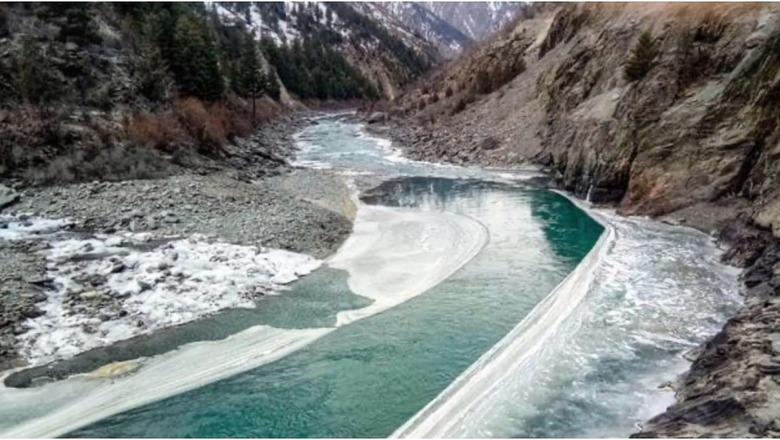
views
Sometime around the end of last month, the Cabinet Committee on Economic Affairs sanctioned 4526 crore rupees to construct the 540 MW Kwar hydropower project in Jammu and Kashmir’s Kishtwar district by Chenab Valley Power Projects Pvt. Ltd, a joint venture between the state PSU National Hydro Power Corporation Ltd and Jammu and Kashmir State Power Development Ltd with an equity contribution of 51% and 49%, respectively.
The project above is a part of the Indus basin and would be one of the many development projects coming up in the district. Other important projects are Pakal Dul and run-of-the-river (ROR) Kiru hydroelectric projects, having power generation capacities of 1000 MW and 624 MW, respectively. The ROR hydroelectric projects generate electricity from the flowing water in the absence of large dams and reservoirs.
These projects hold strategic importance in the dynamics of Indo-Pakistan relations, especially when the latter’s reliance on China has reached concerning levels for economic development. The backdrop to these developments is the Indus Water Treaty (IWT) signed between India and Pakistan in 1960 to share the waters of six Indus basin rivers that flow from India to Pakistan.
As per the treaty, India has complete rights over three eastern rivers— Sutlej, Beas, and Ravi— whereas Pakistan has complete rights over three western rivers— Sindhu, Chenab, and Jhelum.
In 1960, citing the precedent of the use of water resources during the British rule, Pakistan got a lucrative deal of using almost 80% of water in the Indus basin. But Pakistan is highly dependent on its neighbours for water. In the case of the water of the Indus river, India is an upper riparian state, and in the case of the Kabul river, Afghanistan is an upper riparian state.
Things between India and Pakistan have been as sour as vinegar since the beginning. Bomb blasts and terrorist attacks of 2008, 2016, and 2019, and the role played by the Pakistani establishment in them, have repeatedly led to questions on the validity of the IWT. Chinese investment in POK and near the border also adds complexity to the Indian interests.
Although India can back out from the IWT by citing the Vienna Convention on the Law of Treaties, it has not done so yet. And thus, that card is unavailable to play for the time being. Also, India can push Pakistan to revisit the conditions laid out in 1960, but it is unlikely to happen, thanks to the gigantic share Pakistan is getting from the Indus basin.
Given this context, the primary thing that India can aggressively do is utilise the water on which it has a legitimate claim, according to the existing conditions of the treaty. Though Pakistan has control over the Western rivers, India can still build the ROR projects on them— and thus, since the brutal Uri attack in 2016, the central government has sanctioned various projects on both the eastern and western rivers. Kiru and Ratle (ROR), and Pakal Dul (concrete-face rock-fill dam) projects are already being constructed on the Chenab and its tribunary.
Pakistan also gets the water from the river Ravi, to which India has complete rights. In May of last year, India decided to give a nod to the Ujh Multipurpose project, which would be built on the river Ujh, a tributary of the Ravi. With this project, India would be able to block 531 MCM of water flowing to Pakistan.
However, it is not the case that India is undertaking such development projects on just Western borders. On the Eastern side, India is planning to construct the country’s second-largest dam at Yingkiong in Arunachal Pradesh, with a capacity to store 12.2 BCM of water, in response to the Chinese aspirations to build another dam on the Brahmputra river.
To cut a long story short, India has decided to counter the China-Pakistan axis with these developments. They serve the Indian people `and our strategic interests well.
Harshil Mehta is an analyst who writes on international relations, diplomacy and national issues. The views expressed in this article are those of the author and do not represent the stand of this publication.
Read all the Latest Opinions here




















Comments
0 comment